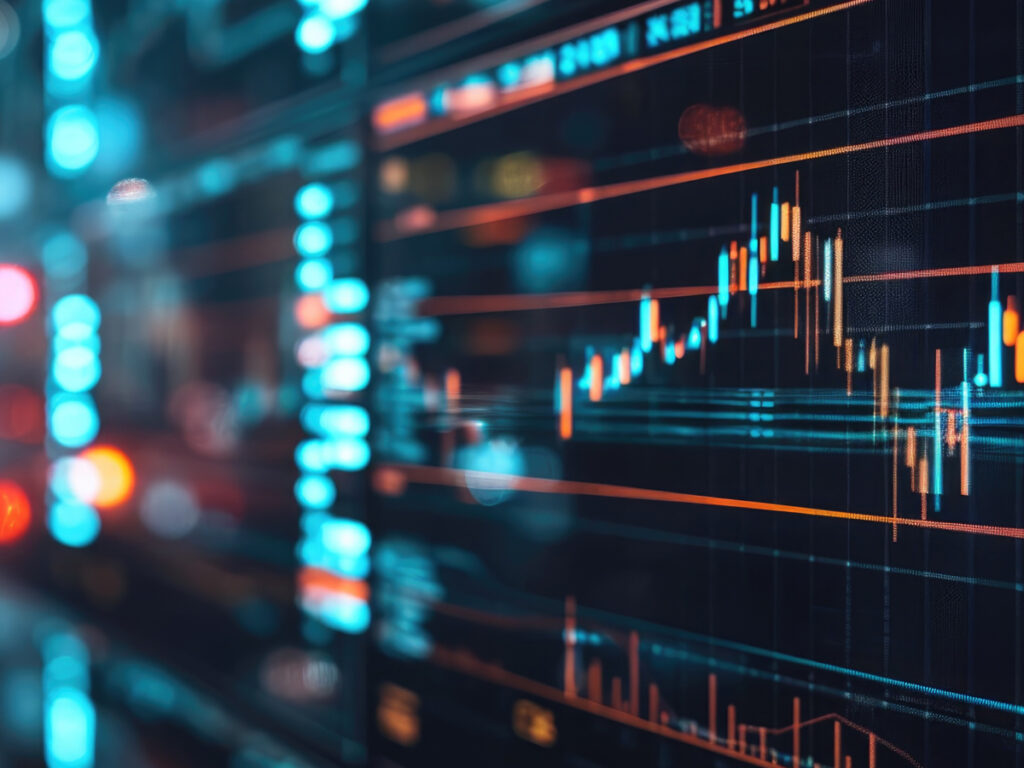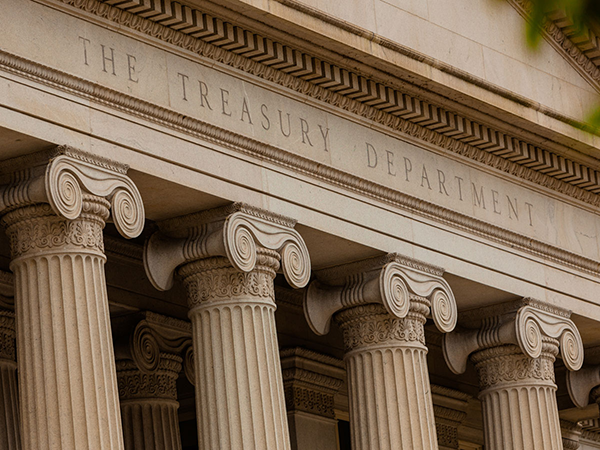This article originally appeared in CryptoSlate on February 27, 2019.
Stablecoins are the latest innovation to emerge over the past year and have the potential to revolutionize not only virtual currency markets but to also become a new mechanism for worldwide commerce. Will stablecoins become the mechanism for stability and liquidity in the ecosystem?
The world banking system is viewed by its stakeholders as the foundation of the world economy. During the past decade, new technologies have emerged that have redefined methods for payments, clearing, and settlement. These technologies not only created unparalleled opportunities for a new and emerging industry—FinTech—but also unprecedented risk.
As a result, the financial services industry has invested billions of dollars every year in automation, innovation, security, and technology infrastructure; however, the traditional retail banking that worked for our parents and grandparents is no longer a viable option. Advances in artificial intelligence, human psychology and computer science, such as quantum computing, are expected to further disrupt the industry.
The central banks, financial institutions, and regulators understand the importance of virtual currency, digital assets, and other technology disruptors and this system is seeking to bring order to the new reality through supervision and regulatory action.
The Stablecoin Concept
Stablecoins are the latest innovation to emerge over the past year and have the potential to revolutionize not only virtual currency markets but to also become a new mechanism for worldwide commerce. Will stablecoins become the mechanism for stability and liquidity in the ecosystem? Can it provide investors with the accountability and transparency they seek, and, more importantly, become the vehicle for a more robust and flexible regulatory framework?
While the virtual currency is new, the stablecoin concept has been around for several years. The idea is simple: provide people with the practical benefits of convertible virtual currency without the worry of price fluctuations. This is achieved by pegging a coin against a stable asset such as the US dollar, Euro, or a commodity such as gold or silver.
The public at large has not yet embraced convertible virtual currency and the stablecoin concept has the potential of becoming the bridge that may enable a wider acceptance by the public and investors that have not yet warmed up to it.
Stablecoin Classifications
At this point, the list of stablecoin projects is expected to grow. Stablecoins that emerged over the past year are beginning to address the volatility through decentralized and centralized platforms. New technologies are rapidly emerging that will likely create new opportunities and risks for investors, the financial services industry, and blockchain companies seeking to raise capital. The ecosystem has already identified several stablecoin types, including:
-
Fiat stablecoin—pegged against or collateralized by currency (fiat) such as the US dollar or Euro generally in a fixed ratio (1 stablecoin = 1 US$). Examples of fiat stablecoins are True USD, USD Tether, Paxos Standard, Center, Gemini Dollar, and Bitcoin Air (USDAP).
-
Crypto stablecoin—pegged against or collateralized by other virtual currencies. Examples of crypto stablecoin are BitShares, BitUSD, MakerDAO (DAI, Sweetbridge, Havven), nUSD, and Augmint.
-
Commodity stablecoin—pegged against or collateralized by a commodity. The commodity can be a metal (gold, silver, platinum, and copper), energy (crude oil, heating oil, natural gas, and gasoline), livestock (pork bellies, live cattle and feeder cattle), or agricultural (corn, soybeans, wheat, rice, cocoa, coffee, cotton and sugar). Digix Global and HelloGold are metal-based stablecoins; however, there aren’t many other examples currently. The list of commodity stablecoins is expected to grow as farmers across the globe may find them to be an ideal utility to raise capital and provide business liquidity, pay for goods and services, and minimize risks and costs associated with accounts receivable factoring, foreign exchange, commodity price volatility, weather, and natural disaster impact, and interest rate (inflation) risk.
-
Algorithmic stablecoin—a trustless stable cryptocurrency which closely correlates with the US dollar. This is achieved through algorithmically adjusting coin supply based on ecosystem demand. Basis, Fragments, Carbon, Kowala are good examples of algorithmic stablecoins. Future algorithmic stablecoins may be similar to an index fund (mutual fund or exchange-traded fund) designed to follow certain preset rules so that the fund can track a specified basket of underlying investments.
-
Hybrid stablecoin—generally pegged or collateralized by fiat first and then a basket of assets later using an off-chain tokenized collateral. Examples of hybrid stablecoins are Reserve, Saga, and Aurora, Boreal. Hybrid stablecoins can employ characteristics of other stablecoins listed above and can be viewed or become a financial instrument. Future hybrid stablecoins may employ a security token strategy where the initial issuance will be pegged against the fiat (dollar) and then later pegged against a security token (debt or equity).
-
Derivative-backed stablecoin—a financial instrument that exists both on-chain and off-chain and can be used to protect investors and other members of the ecosystem (miners, etc.) from price fluctuations, interest rate risk (inflation) and transfer risk through futures, forwards, swaps or options. These derivative instruments can become complex multi-layer and multi-purpose and may employ different schemes to minimize risk, including virtual currency baskets (coins and tokens) or other assets (commodities) with protection from foreign exchange, interest rate (inflation) and other risks. Arbitrage and high-frequency trading can be employed to protect investors from sudden changes in market values.
-
Sovereign stablecoin—a coin backed by and approved by a central bank or a regulatory authority. The purpose and the reason for the issuance can vary. Countries like Cuba, Russia, China, Iran, North Korea, and Venezuela can use a sovereign stablecoin to fight inflation, trade wars, economic embargos or sanctions. For instance, Venezuelan President Nicolas Maduro announced an oil-backed cryptocurrency in March 2018 to stop its out-of-control inflation even though members of Venezuela’s parliament expressed concerns about constitutionality and legality of such action.
In October 2018, Japan’s Financial Services Agency (FSA) declared that stablecoins, like Tether (USDT), Gemini Dollar (GUSD), USD Coin (USDC) and Paxos Standard (PAX), are not cryptocurrencies under the law. Crypto Garage recently received its approval from Japanese regulators. In addition, a number of Japanese national banks are looking at developing their own stablecoins to cut transaction costs.
For example, Mizuho Financial Group and Mitsubishi UFJ Financial Group are creating their own digital currencies separately named J-Coin and MUFG Coin. Separately, Nippon Yusen Kaisha (NYK), a shipping company, announced in November that it will create its own stablecoin to pay its employees.
Regulatory and Tax Issues
The FinCEN Guidance on the Application of Regulations to Persons Administering, Exchanging or Using Virtual Currencies (FIN-2013-G001, March 18, 2013) provides a very broad definition of convertible virtual currencies. In turn, the fate of stablecoins is less certain and will require significant tax analysis to determine if the issuance of a coin is a taxable event.
Key questions: what are the facts and circumstances around the stablecoin issuance? What are the rights and obligations or parties involved in a transaction? Is stablecoin an advanced payment or a deposit, bailment or a notional principal contract, an option or a warrant, a note or equity investment, or is it a multi-layered financial instrument? Companies issuing or investing in stablecoins will need to work with their attorneys, accountants, and regulators to answer these questions.
A robust regulatory framework is the key to public trust and the path for wider cryptocurrency adoption by the public in the United States and abroad. The regulatory environment in the United States is unique. Federal and state regulators will need to work together with the ecosystem in defining the framework and providing the necessary support and oversight for domestic and international commerce. Different types of stablecoins with various degrees of complexities may emerge over the next two years. Stablecoins have the potential of becoming a great case study for the regulators and the business community at large.
Final Thoughts
Stablecoins can also become an agent for good. It can help fight famine, provide access to clean water, fight deforestation, and help small businesses and farmers in the developing countries grow. More importantly, stablecoins have the potential to become a vehicle for spreading democracy and democratic values. In developing countries, where access to capital is limited or impossible to provide, stablecoins can provide struggling communities access to capital, liquidity, and the gateway to the world markets.
 This article originally appeared in
This article originally appeared in 

